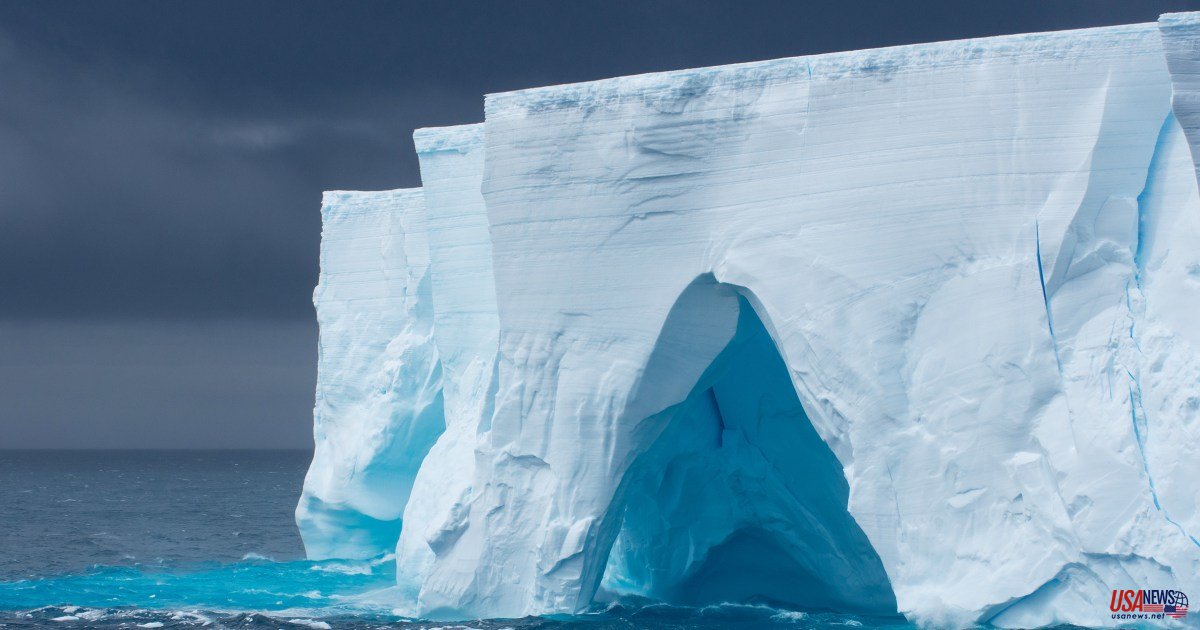For the first time, microplastics were found in Antarctica's fresh snowfall.
Recent years have seen scientists discover microplastic pollution at the Marianas Trench and Mount Everest's summit. These are among the deepest parts of the ocean.
The icy continent at South America's southern tip -- which is mainly visited by scientists -- joins remote areas of the planet, where researchers have documented the existence of tiny bits of polymer.
Researchers collected snow samples from 19 locations in Antarctica's Ross Island region. They found an average of 29 particles per sample. Most of the particles came from plastics found in water bottles and clothing.
The discovery of the researchers, published in The Cryosphere earlier this week, indicates that microplastic contamination is not a problem even in remote Antarctica ecosystems.
Alex Aves, the lead author of the study, stated in a press release that microplastics found in Antarctic snow are "incredibly sad" and highlighted the extent of plastic pollution in even remote areas of the globe.
Researchers are becoming more interested in the ubiquity and effects of microplastics on human health and the environment. Although early studies have shown that microplastics can cause inflammation and cell damage in people exposed to them, scientists are still trying to determine if there are any risks.
Researchers from the University of Canterbury in New Zealand analysed samples taken from 13 locations remote and six near Ross Island research stations to test for microplastics. After a snowfall event, a researcher visited each site three days in succession to collect sufficient snow to fill half-liter stainless steal bottles. The bottles were then returned to New Zealand.
The samples were frozen in New Zealand and filtered before being processed in a laboratory to reduce contamination by plastic equipment.
Researchers also tested several bottles that were not filled with snow, but ultra-pure drinking water to ensure contamination. Two water samples were taken from bottles that had been left open in snow by a researcher.
Researchers excluded particles that were identical to those in field and control samples.
The researchers found on average 29 plastic particles per sample of melted snow at each of the 19 field sites. The samples contained 13 types of plastic. The plastic particles in samples from distant locations, further from Antarctica's scientific research bases, was less.
The most commonly found plastic was polyethylene terephthalate. This plastic is found in many water bottles and synthetic clothes. It was found in approximately 79 percent of samples.
According to models of the atmosphere, it is possible that some plastic from these visits may have traveled thousands or hundreds of miles to reach South America's southernmost continent. This could be New Zealand, Patagonia or Chile.
Previous research has shown that microplastics have been found in the Southern Ocean.
Researchers suggest that the microplastics may have traveled in dust or been deposited at sea from sea spray.
Researchers suggested that it is more likely that the plastics were made from clothing, building materials, or marker flagging at Scott Base, McMurdo station, which are research stations located on Ross Island.
Research has shown that microplastics are common in many parts of the globe, and can be found in our air and dust.
Microplastics are defined by scientists as any polymer particle less than 5 millimeters but greater than 1 micrometer in size. Microplastics can be smaller than even the smallest grain of sand.













